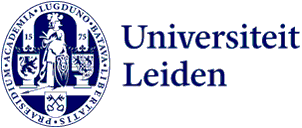In Memoriam - Joan van der Waals
On 21 June, our beloved colleague Joan van der Waals passed away after a long and rewarding life.

Joan van der Waals was born on 2 May 1920 in Amsterdam. He studied physics, chemistry and mathematics at the University of Amsterdam, interrupted by the Second World War He then started working for the Koninklijke Shell Laboratorium Amsterdam. He obtained his doctorate at the University of Groningen in 1950, with a thesis titled: "Thermodynamic properties of mixtures of alkanes differing in chain length". In 1962, while working at Shell, van der Waals received the Bourke Award of the Royal Society of Chemistry. Much later, in 2011, he would receive a ‘Lifetime Achievement Award’ at the 7th International Conference on Gas Hydrates, for work he did in this period. Gas hydrates are ice like crystals containing oxygen, nitrogen, carbon dioxide and methane that can form in water under pressure. Understanding of the formation mechanisms turned out to be very important for oil and gas extraction at sea.
Van der Waals was appointed professor of experimental physics at Leiden University in 1967, at the Kamerlingh Onnes laboratory. The title of his inaugural lecture was ‘Licht in de Fysica’. That reflected a new research line he introduced, at the interface of physics and chemistry, and concerning the study of properties of electronically excited states of molecules in the condensed phase with optical and magnetic resonance techniques. Van der Waals was elected a member of the Royal Netherlands Academy of Arts and Sciences (KNAW) in 1971 and served on the board of the KNAW between 1984 and 1987. In 1985, he was appointed Knight in the Order of the Netherlands Lion.
Soon after Joan’s move to Leiden, his group demonstrated the optical detection of microwave transitions between the spin sublevels of the triplet state in the absence of a magnetic field. The first publication of this so-called zero-field ODMR experiment inspired many research groups worldwide and meant a breakthrough in the study of photo-excited metastable triplet states. Following this kick-start, his group grew and moved to the Huygens laboratory in 1974. There, at the 8th floor, the MAT (the acronym for ‘molecules in excited states’ after translation into Dutch) formed a lively community of students, PhD students, postdocs and guests under the inspiring leadership of Joan for many years.
After his retirement in 1989 up till recently, he regularly visited LION and actively participated in PhD defense ceremonies and seminars. He was gifted by a brilliant mind that has led to an amazing variety of ideas and insights. He has been a stimulating scientist for colleagues all over the world and an inspiring person for many of us.
